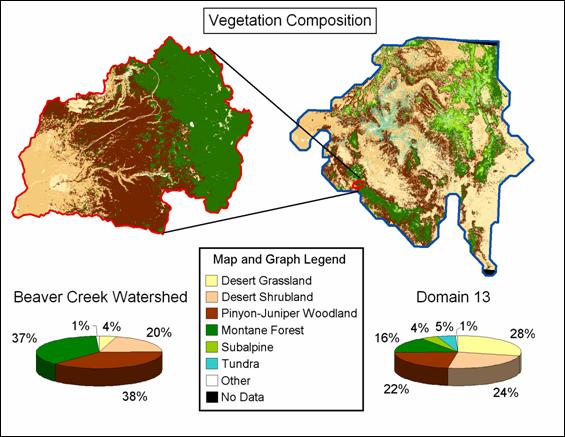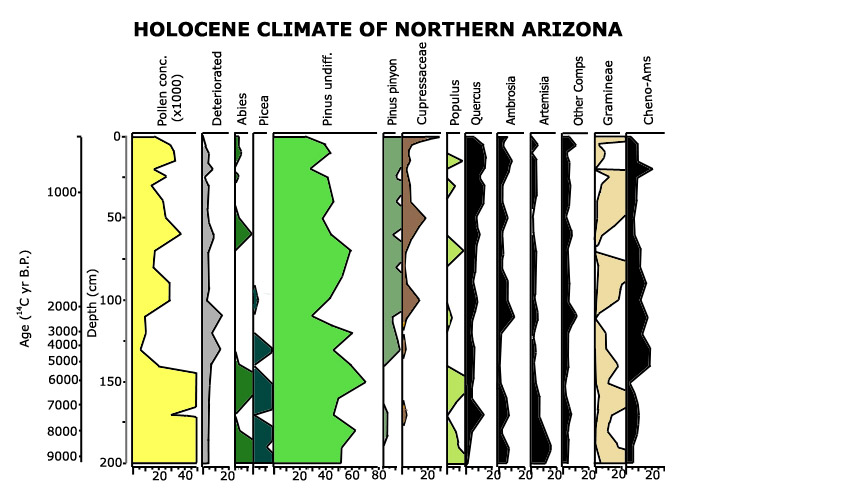The 1625 m elevation gradient within the watershed supports a variety of vegetation types, including ponderosa pine montane forest, pinyon-juniper woodlands, desert scrub, chaparral and grasslands. Together, these comprise 99% of the Beaver Creek Watershed (BCW) and 90% of Domain 13 vegetation types, making the BCW highly representative of Domain 13 vegetation (
Figure 1).
 Figure 1.
Figure 1. Beaver Creek is representative of the major vegetation types in Domain13. This analysis reclassified Southwest ReGAP vegetation associations into six broad vegetation classes
BioMesoNet Towers are targeted for the upper watershed in ponderosa pine forest. Ponderosa pine is the most widely distributed pine in the western US and in Domain 13 and is regionally important for hydrological recharge (Baker 1986, Ffolliott et al. 1989), biodiversity, and carbon sequestration. The
Ecological Restoration Institute (NAU) is focused on understanding the ecology of the important forest ecosystems in the Interior West. Restoration ecology of natural biodiversity, forest structure, surface fire and other disturbance regimes is critically important in forests and woodlands, which have been subject to catastrophic regional fires (e.g., Rodeo-Chedeski, Los Alamos). In addition to the documented impacts of overgrazing, over-harvesting, and fire exclusion, these forests and woodlands also appear to be exhibiting effects of climate change, as warm conditions have fostered drought and unprecedented bark beetle outbreaks, in addition to severe wildfires in western forests and woodlands (Breshears et al. 2005).
Vertebrate and plant diversity in the BCW is high, and reflects the total biological diversity the watershed supports, including invasive species (
Table 1).
Click here for more detailed information on the biology of the Beaver Creek Watershed
Table 1. Vertebrate and plant diversity in the Beaver Creek Watershed (based on USGS SW ReGAP)

9000 years of vegetation change





